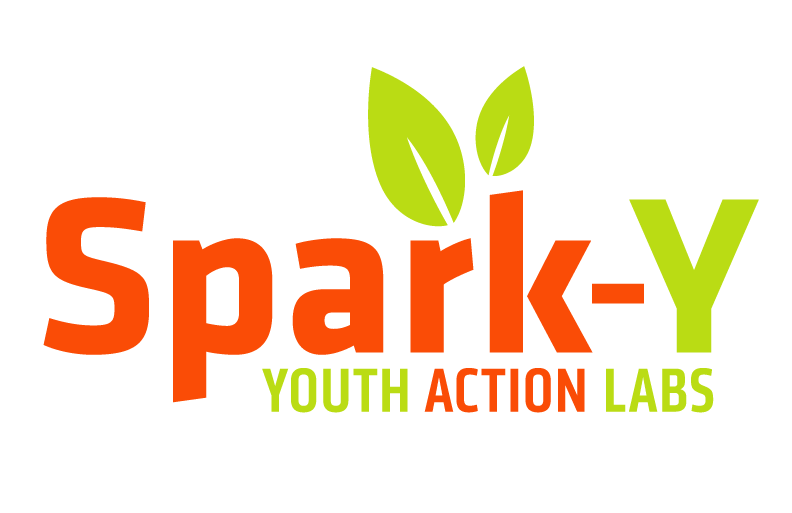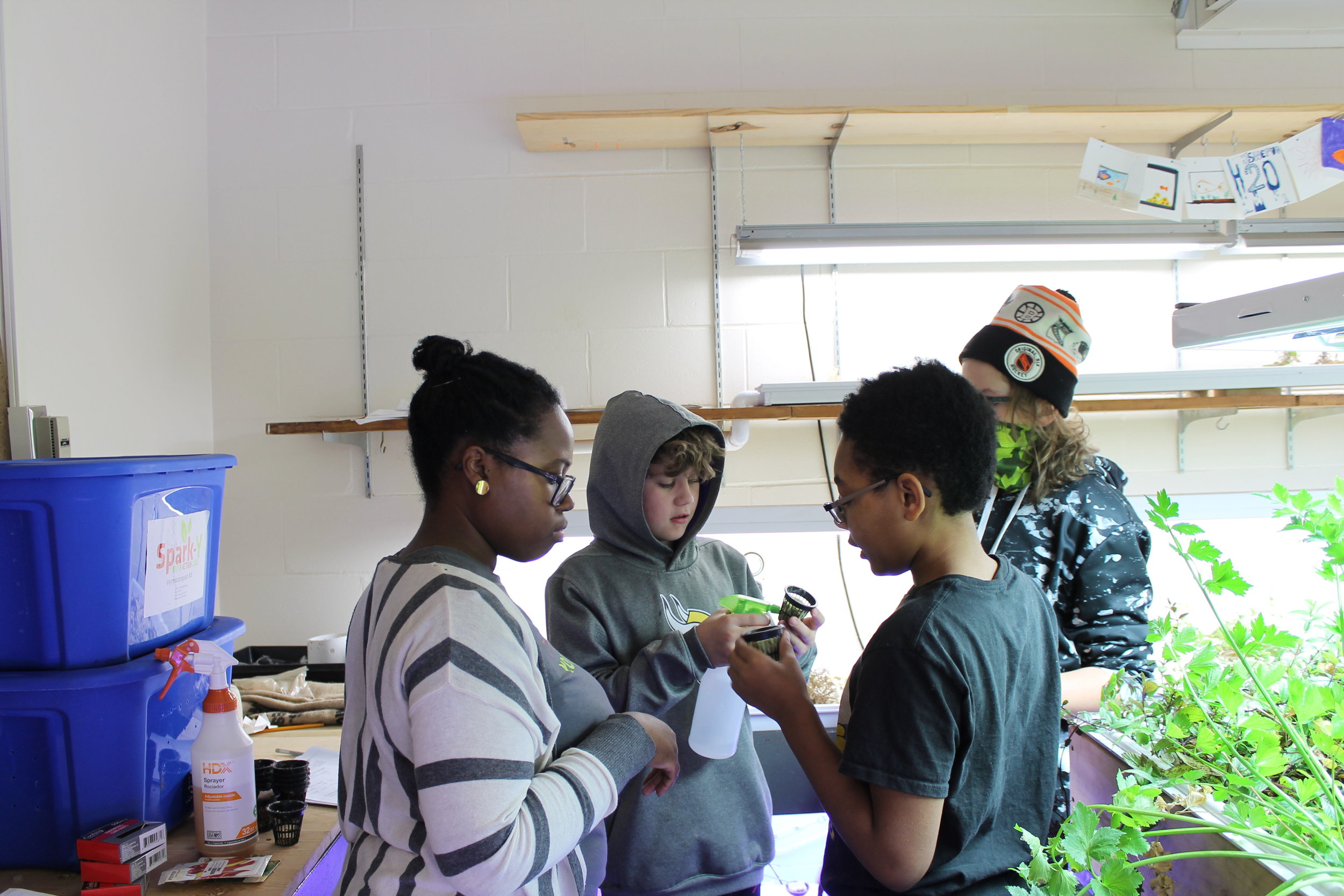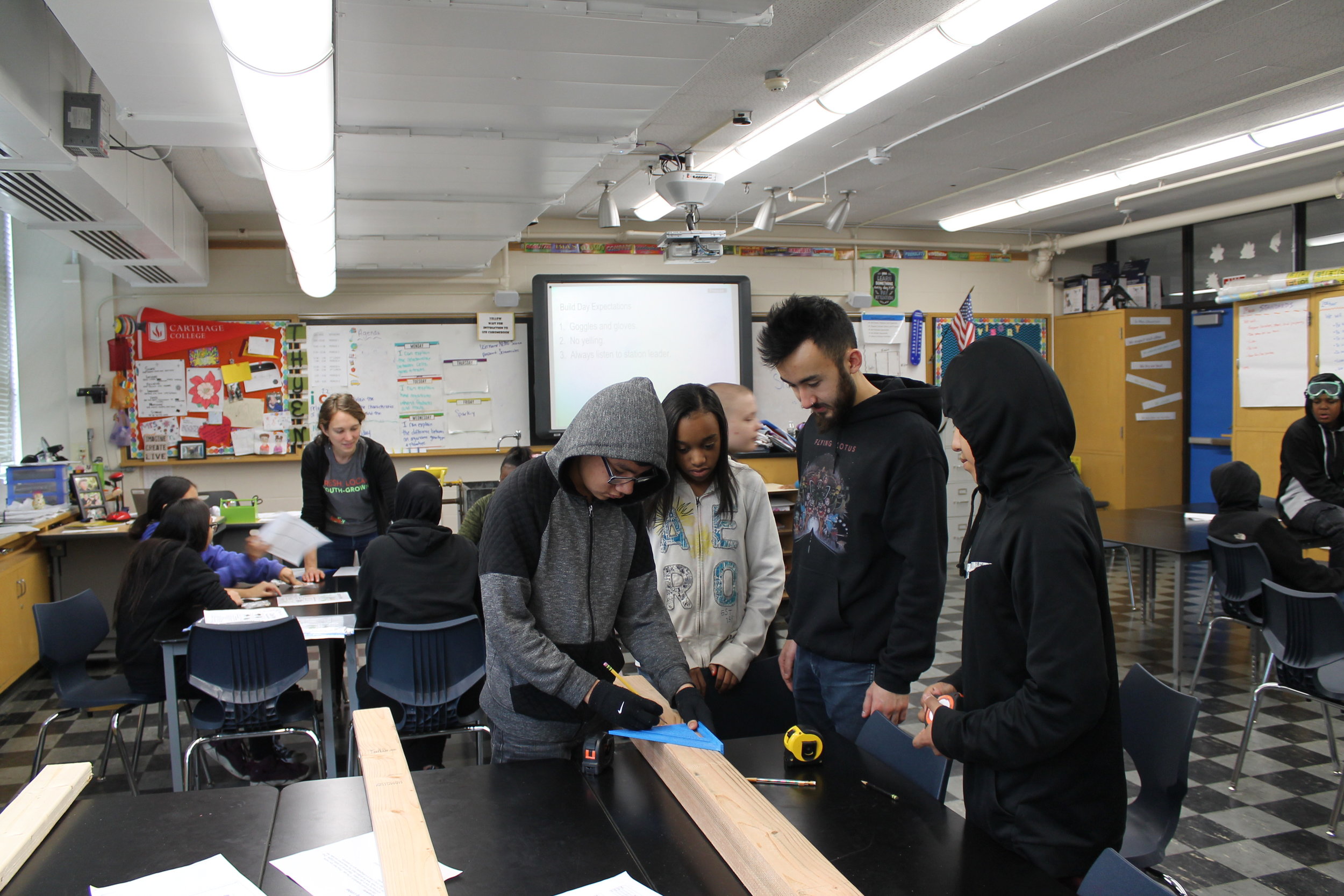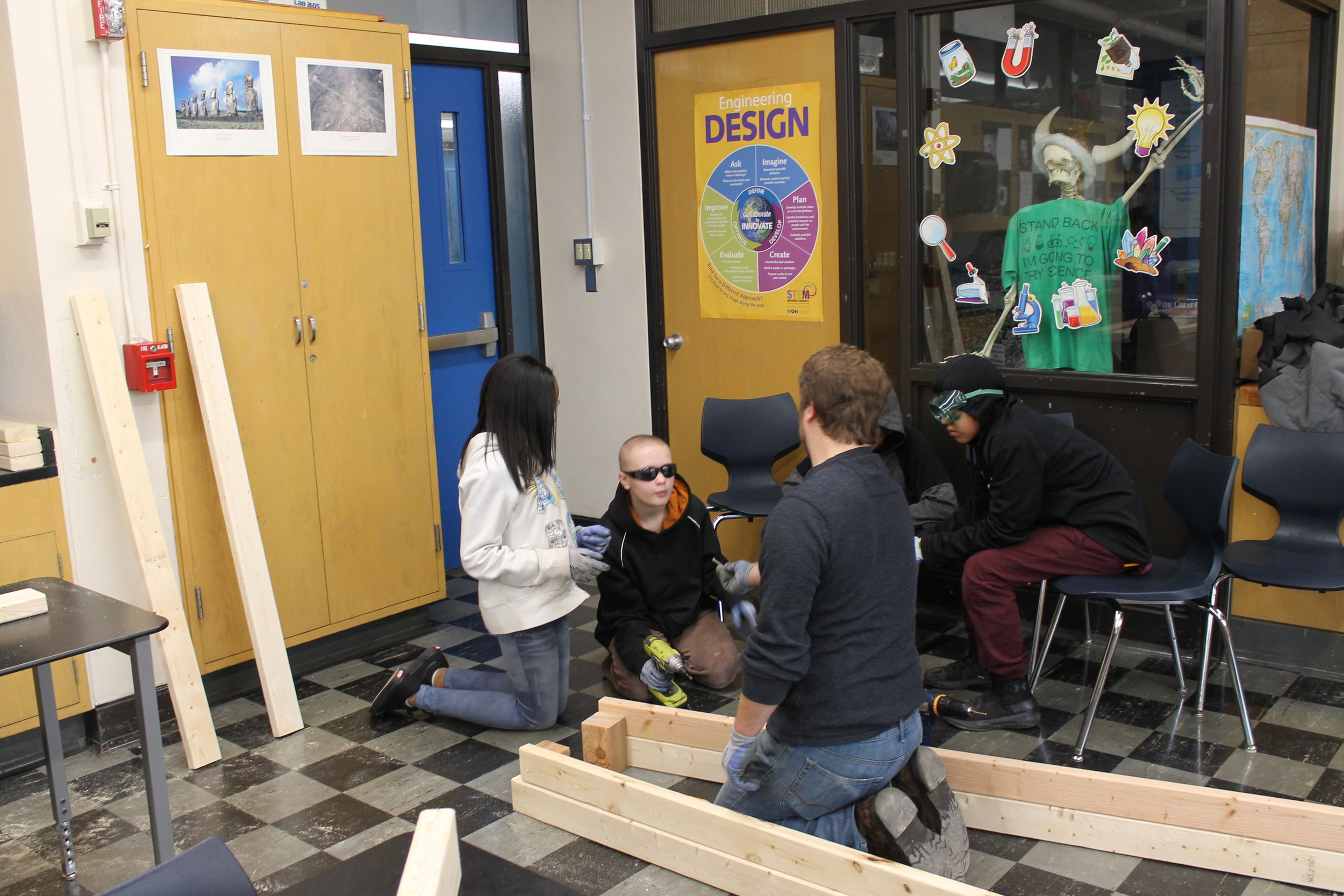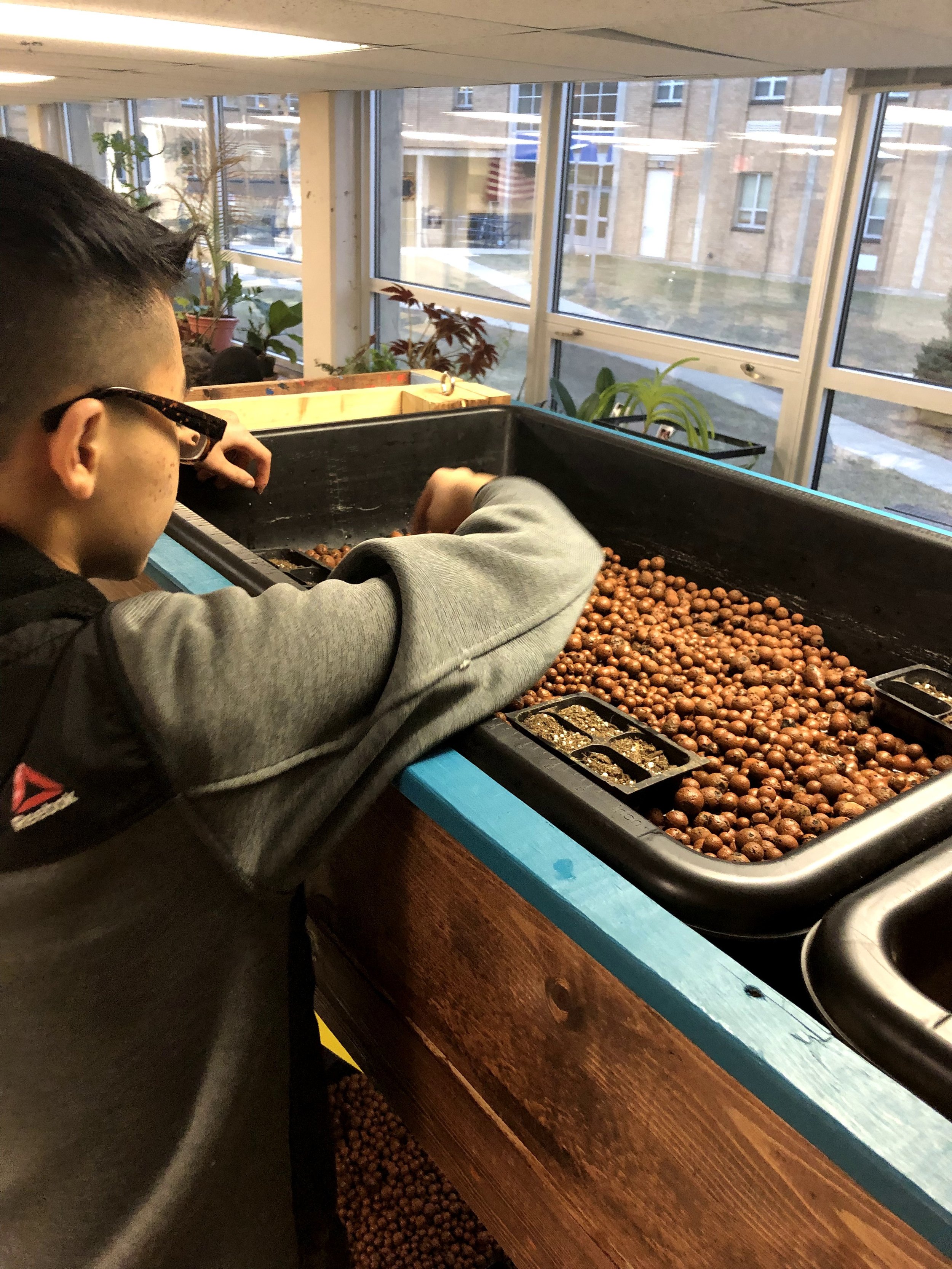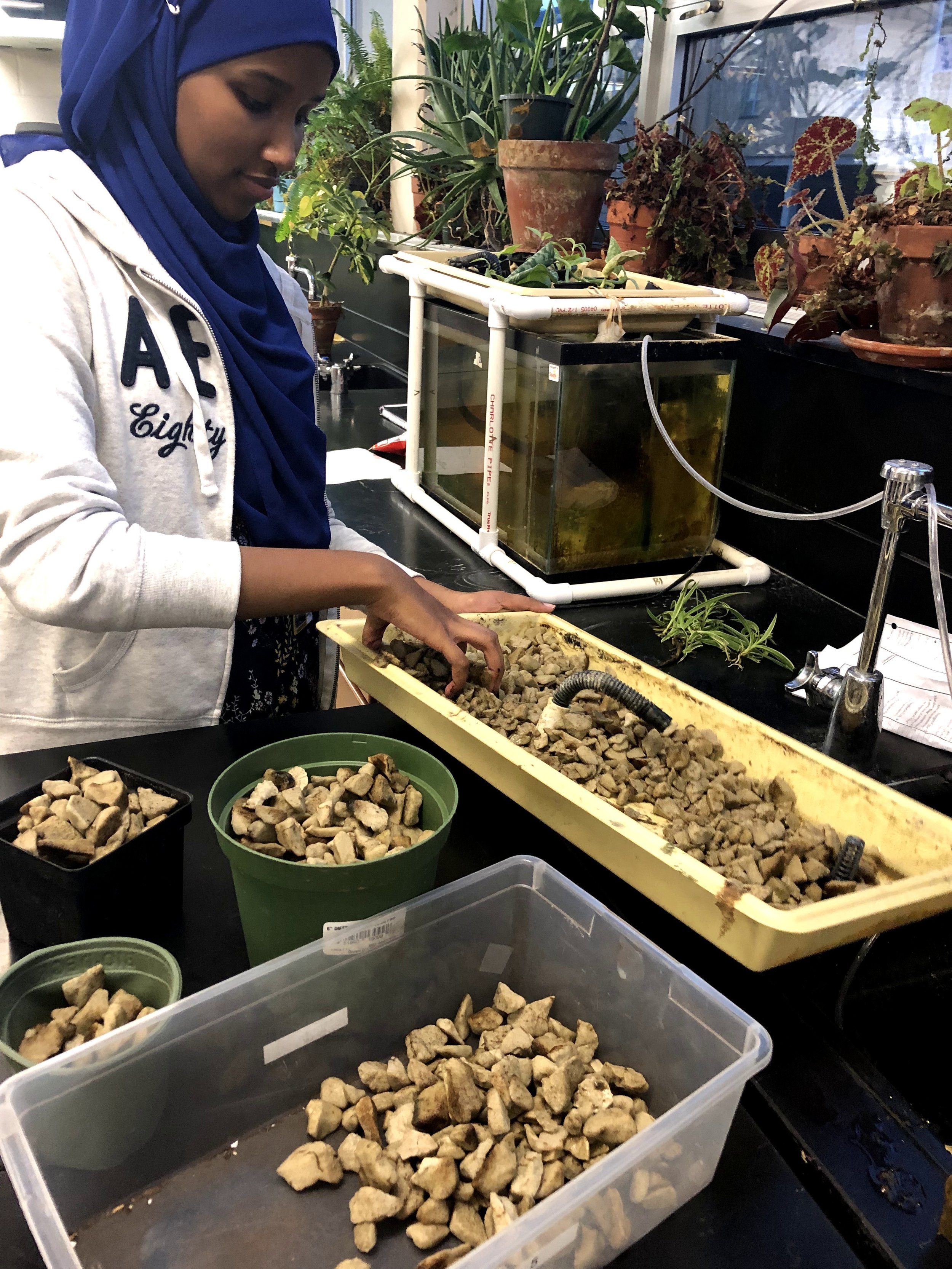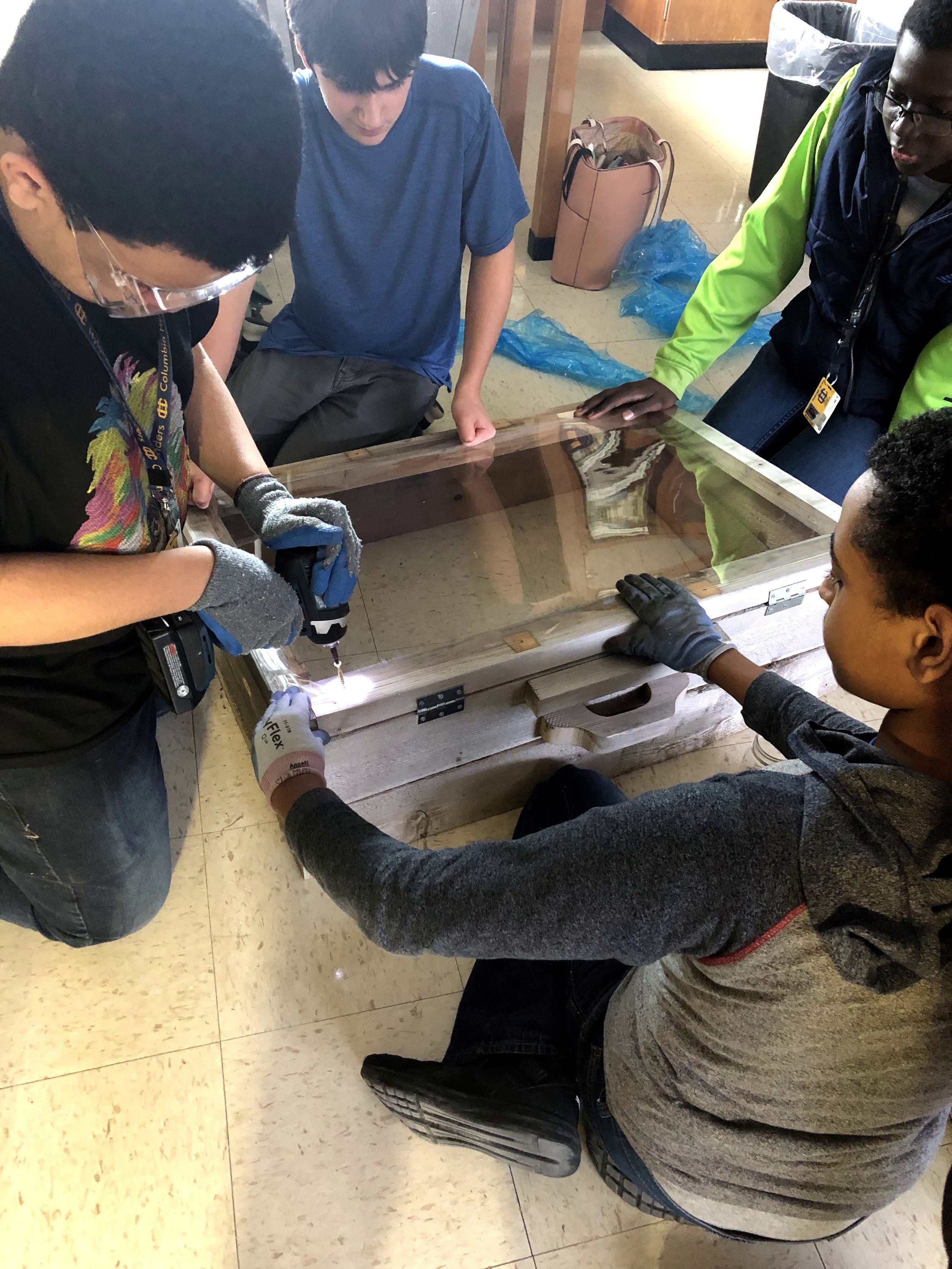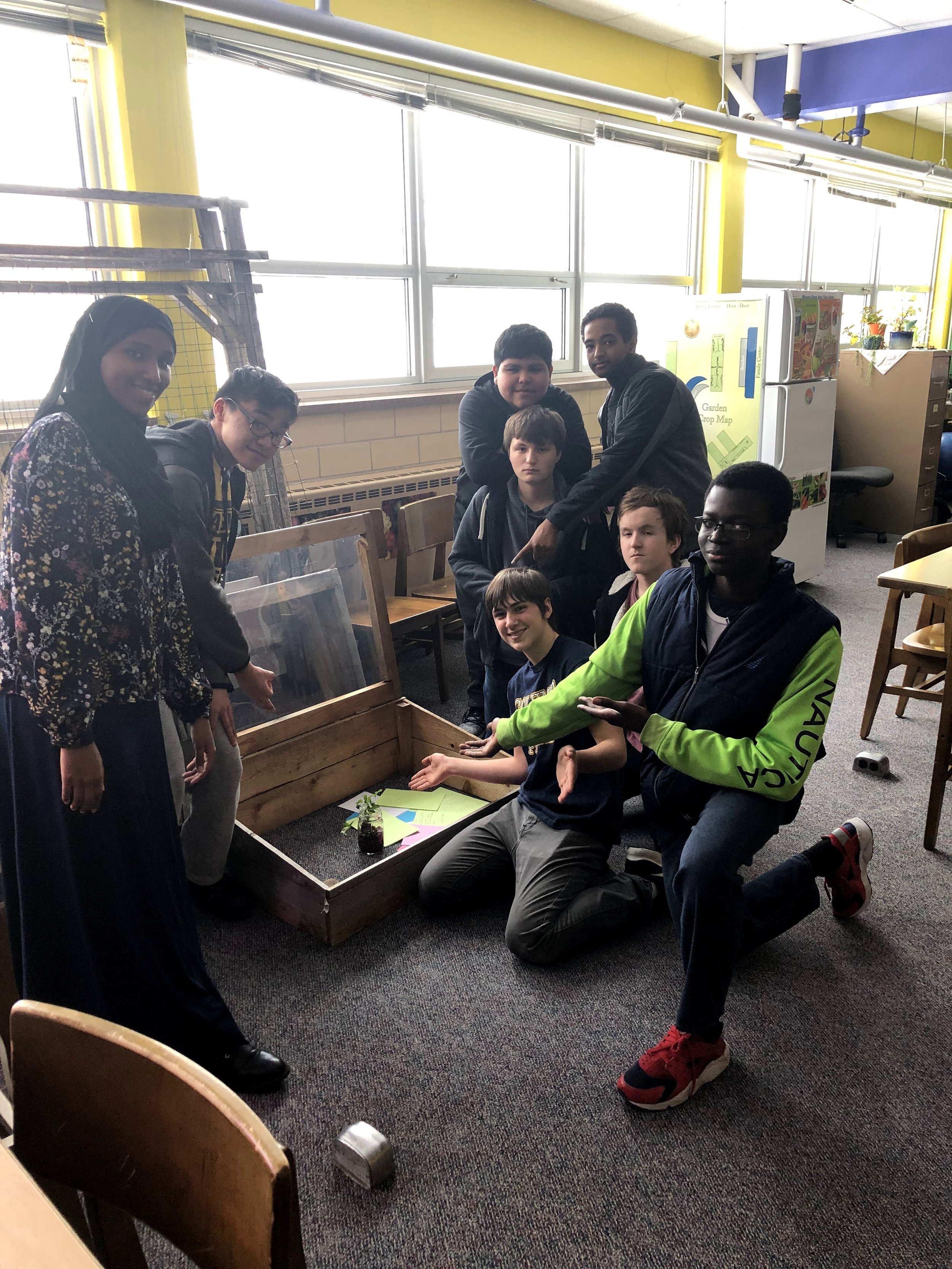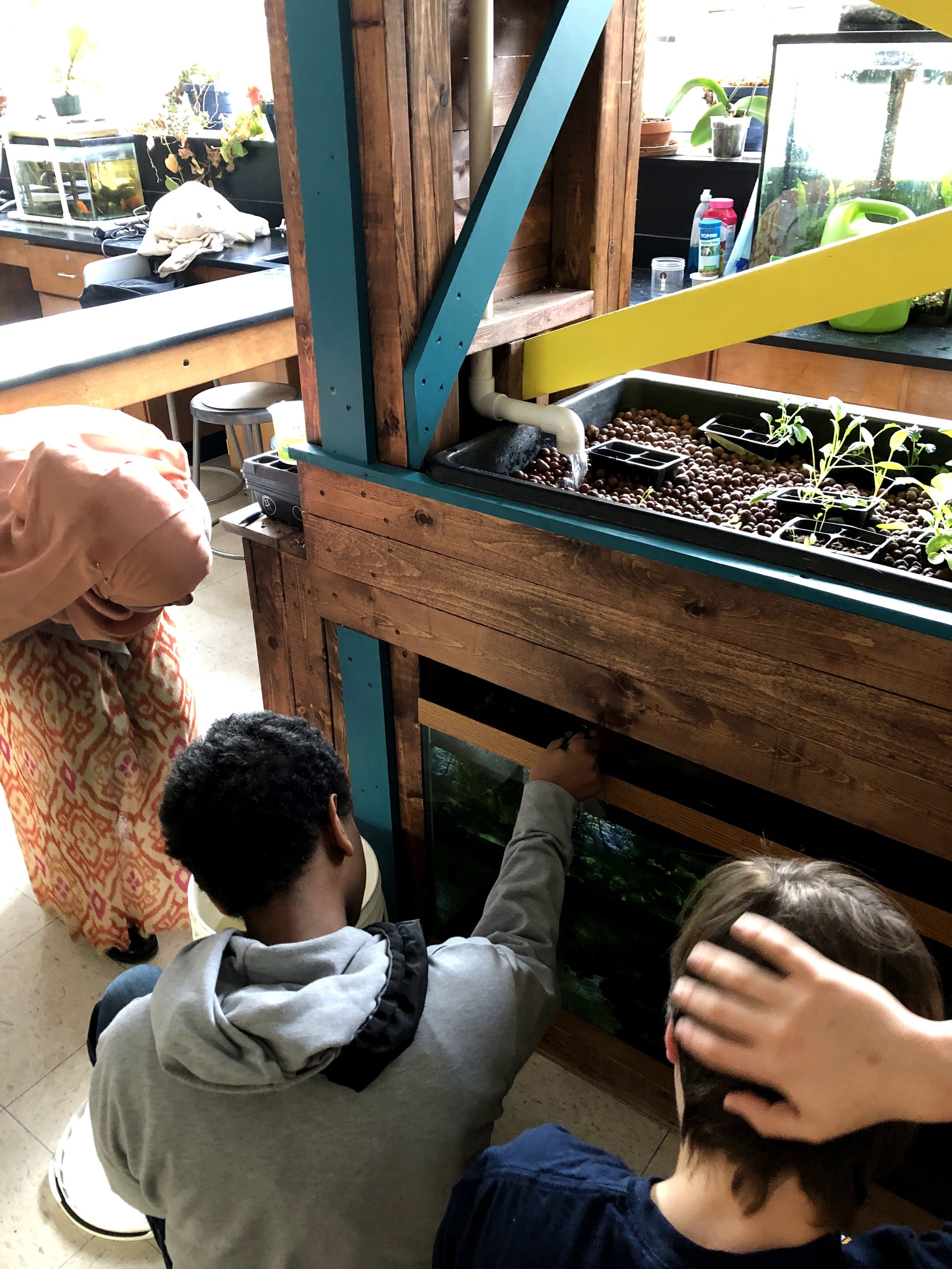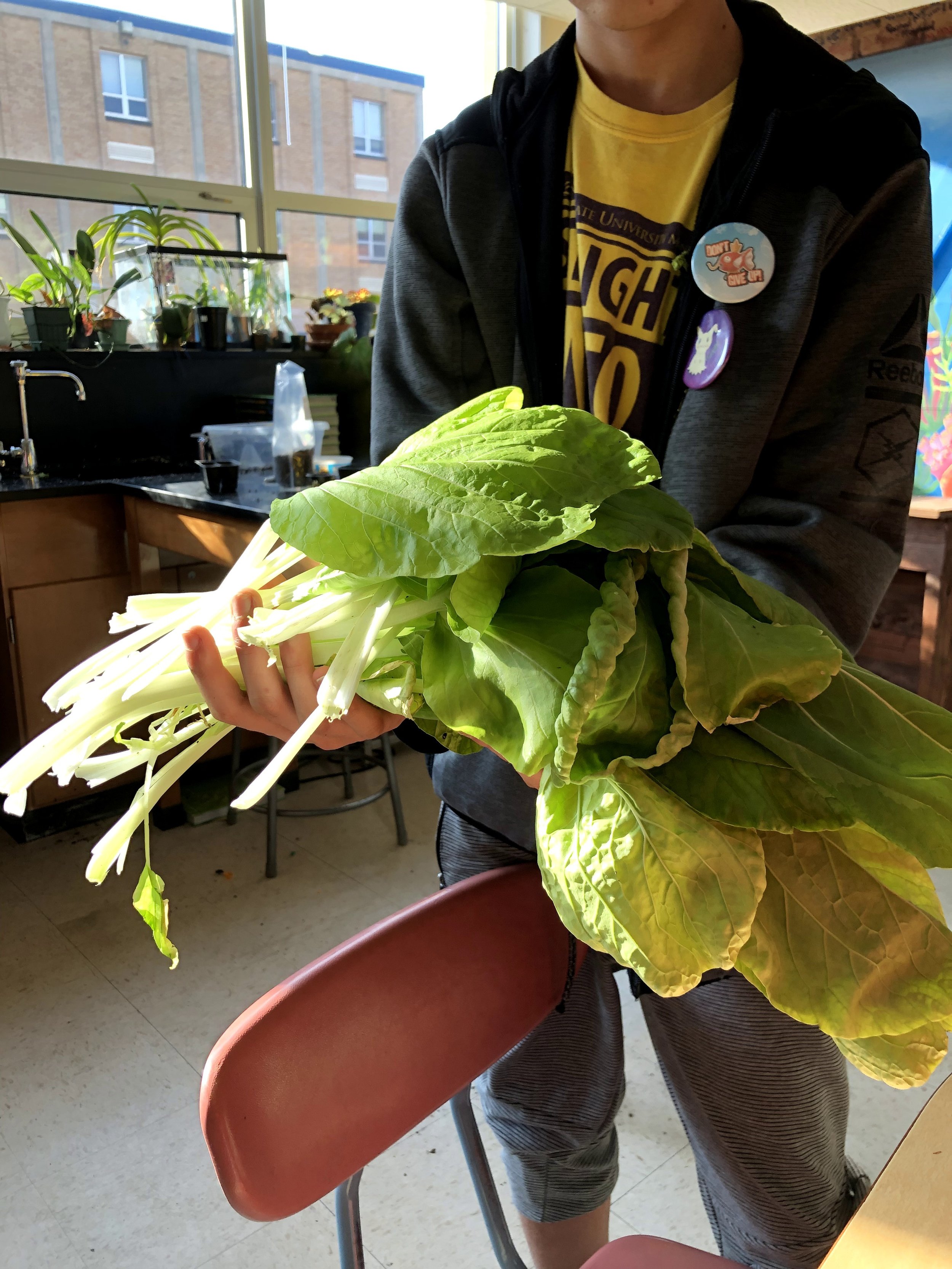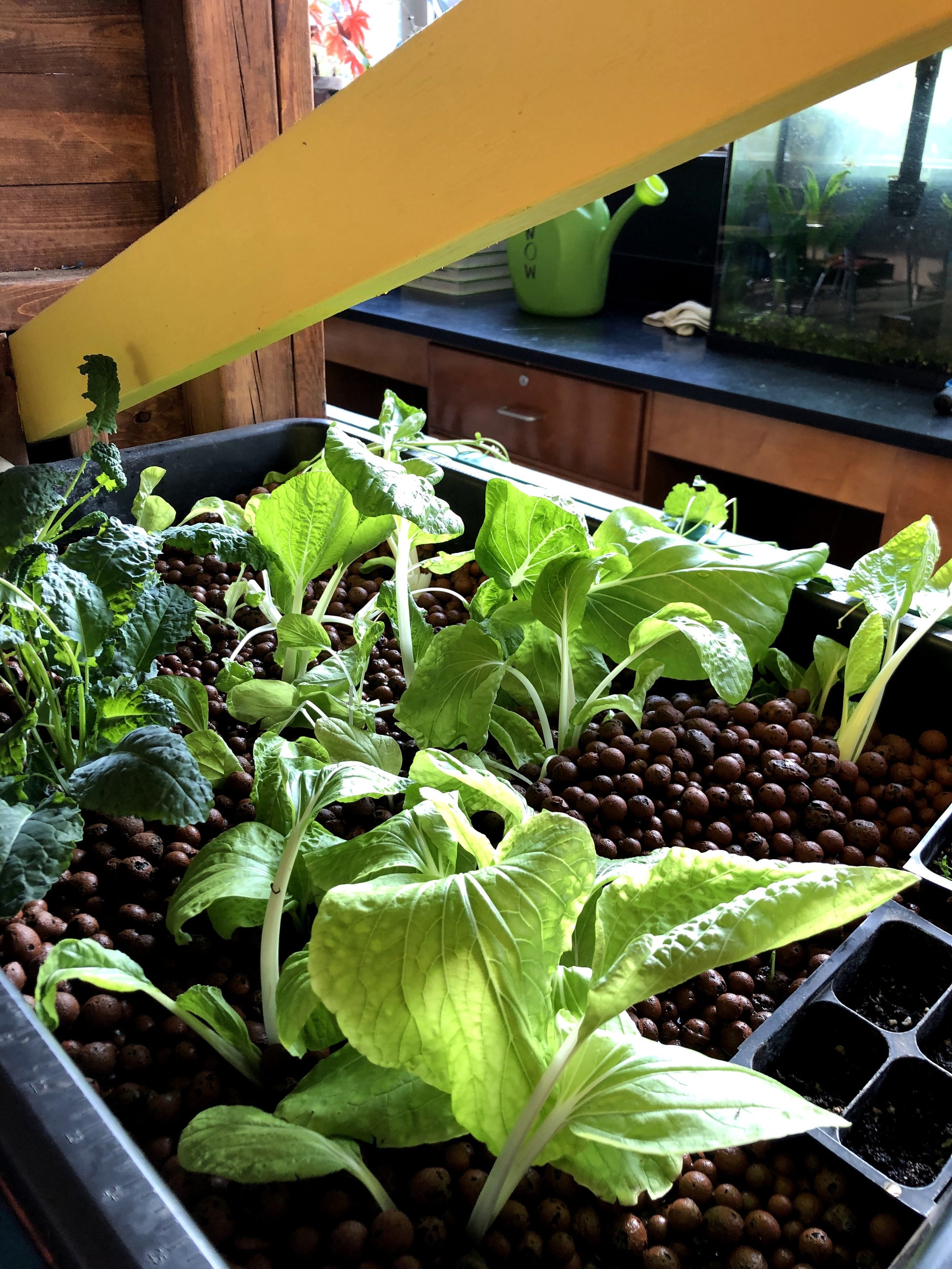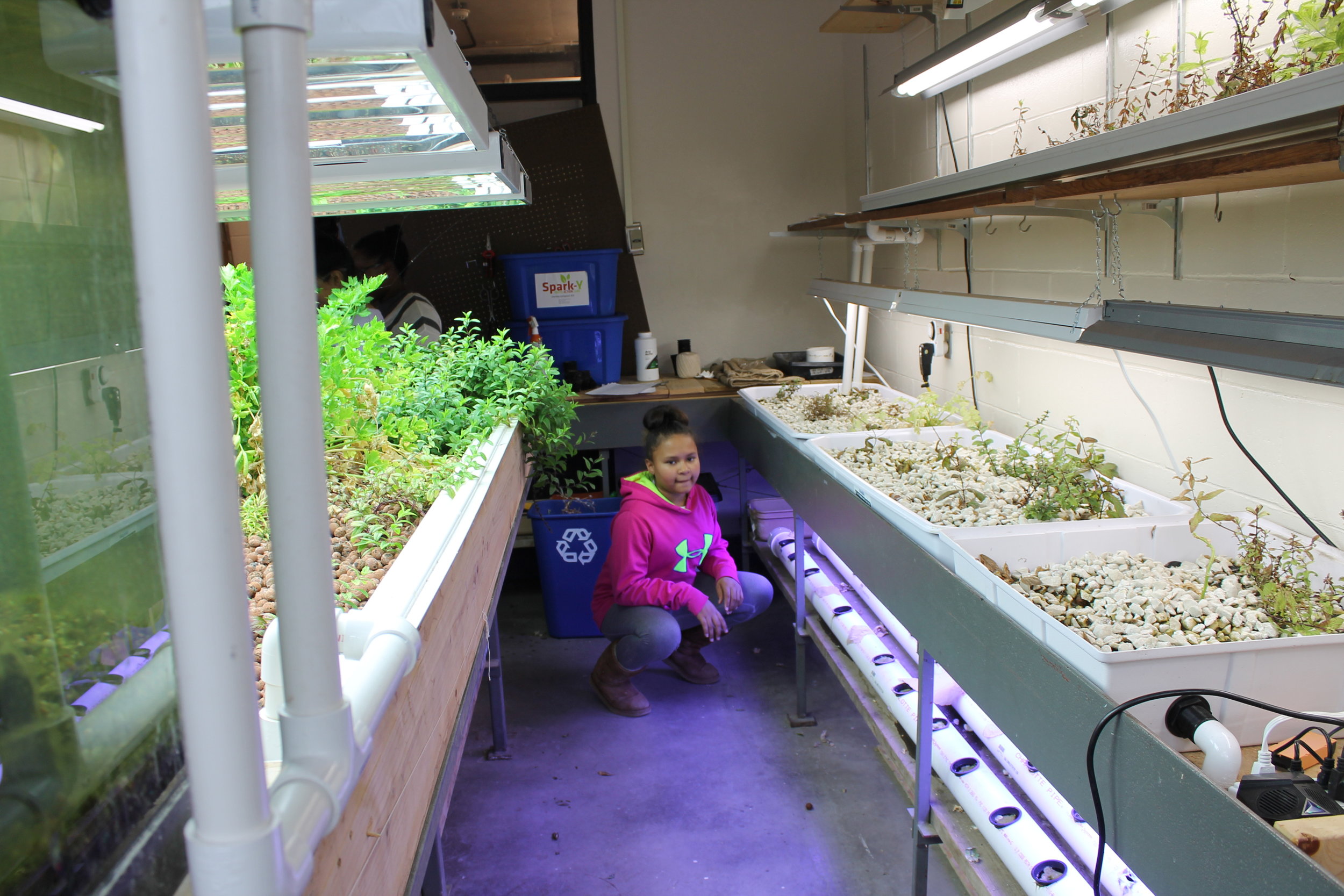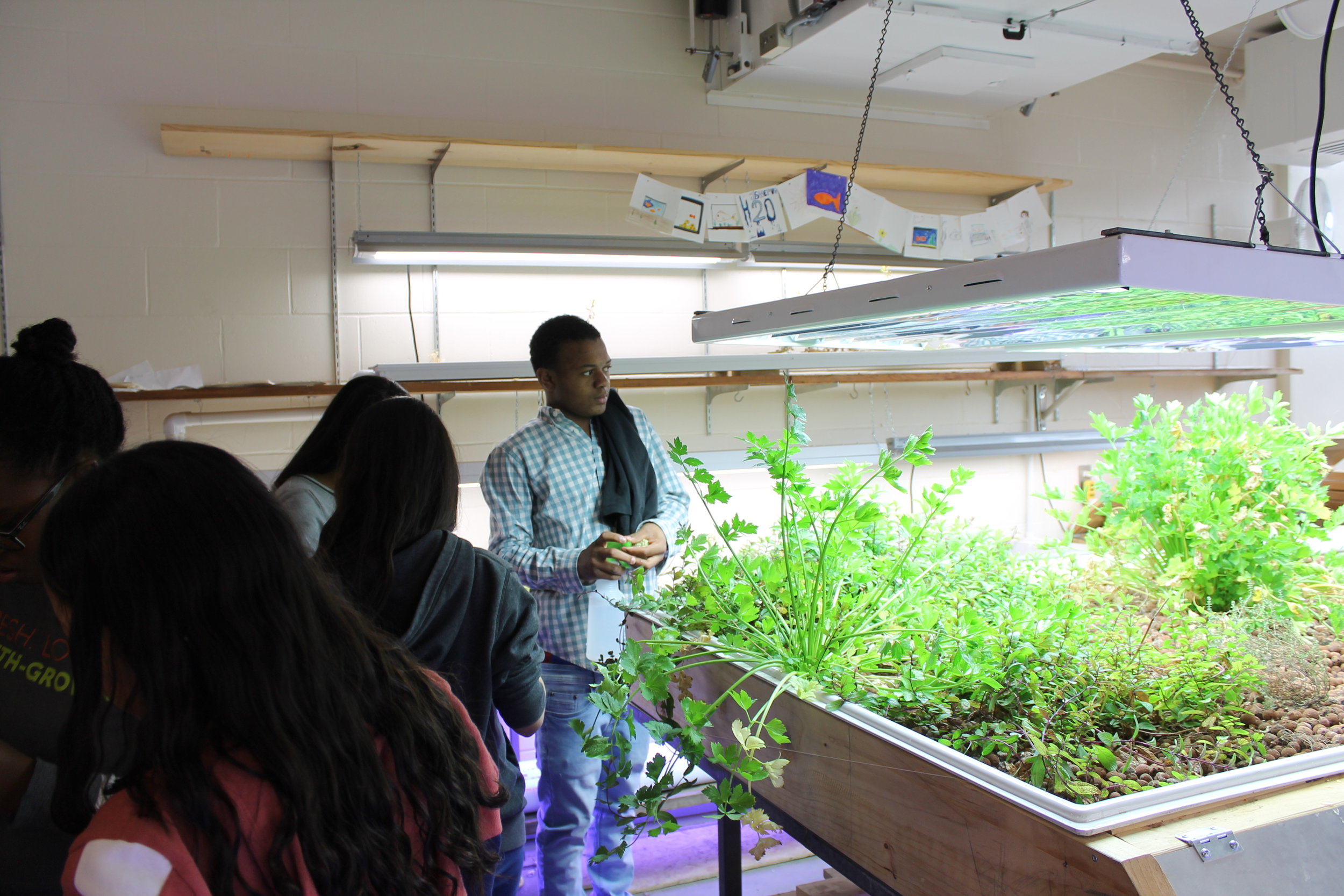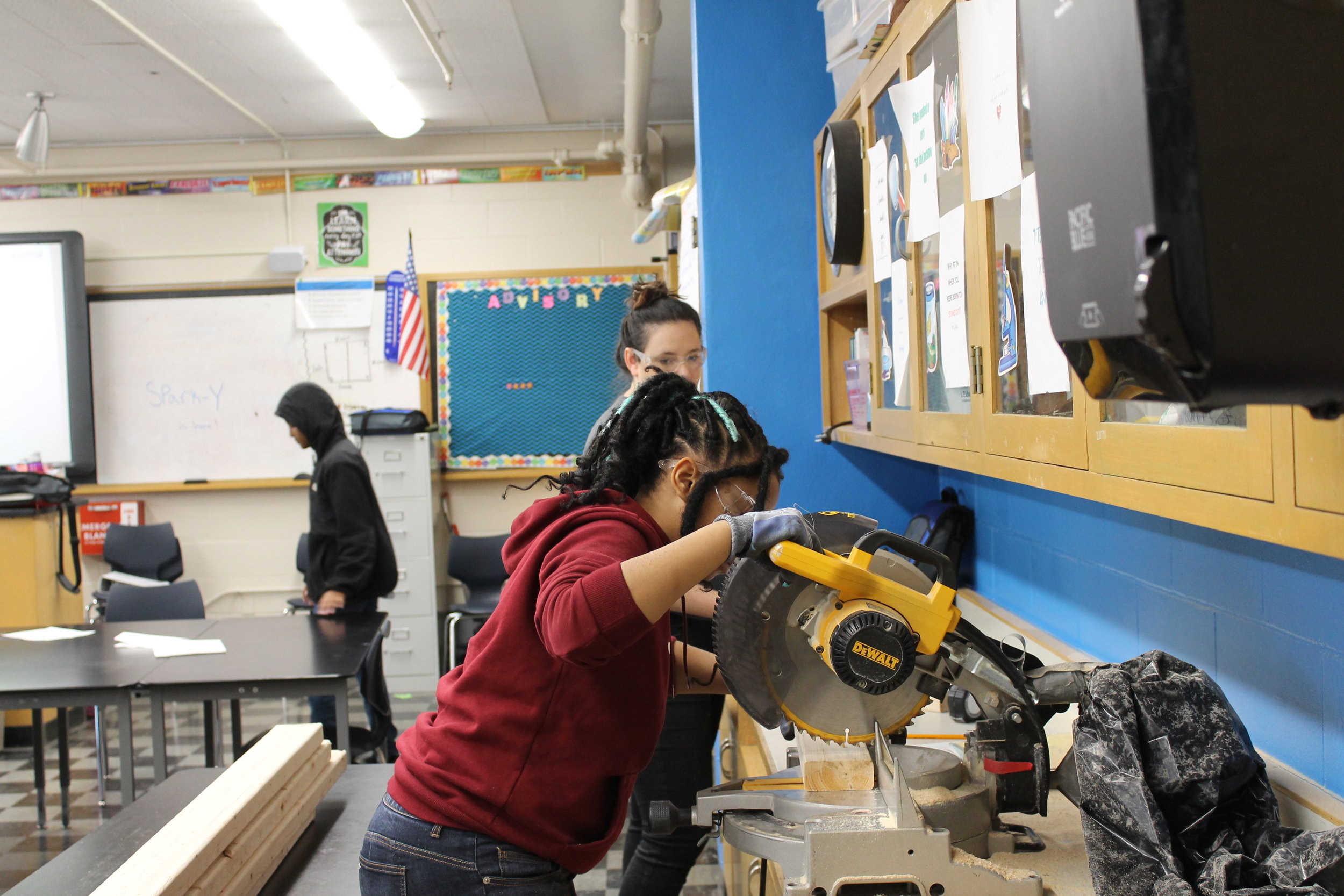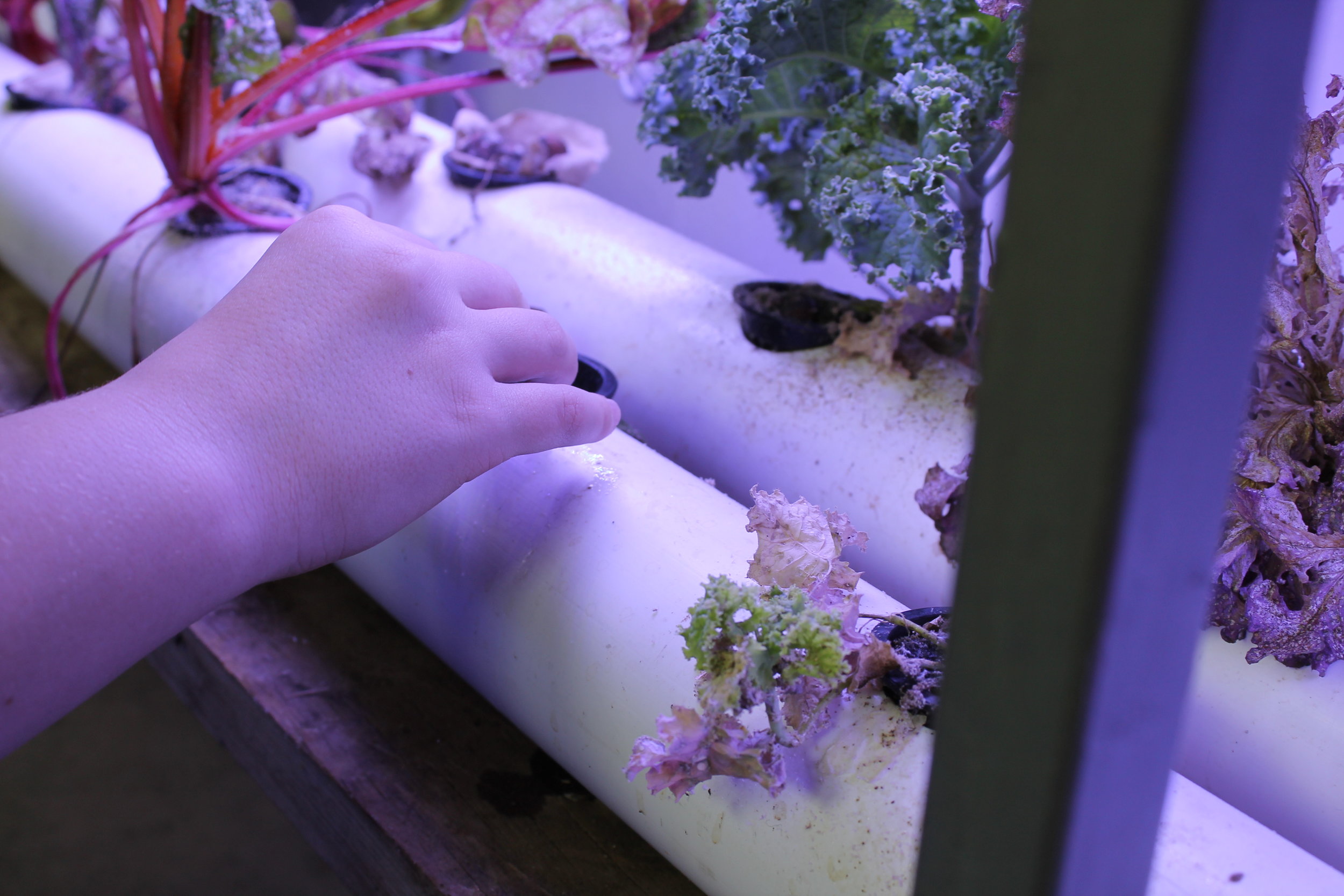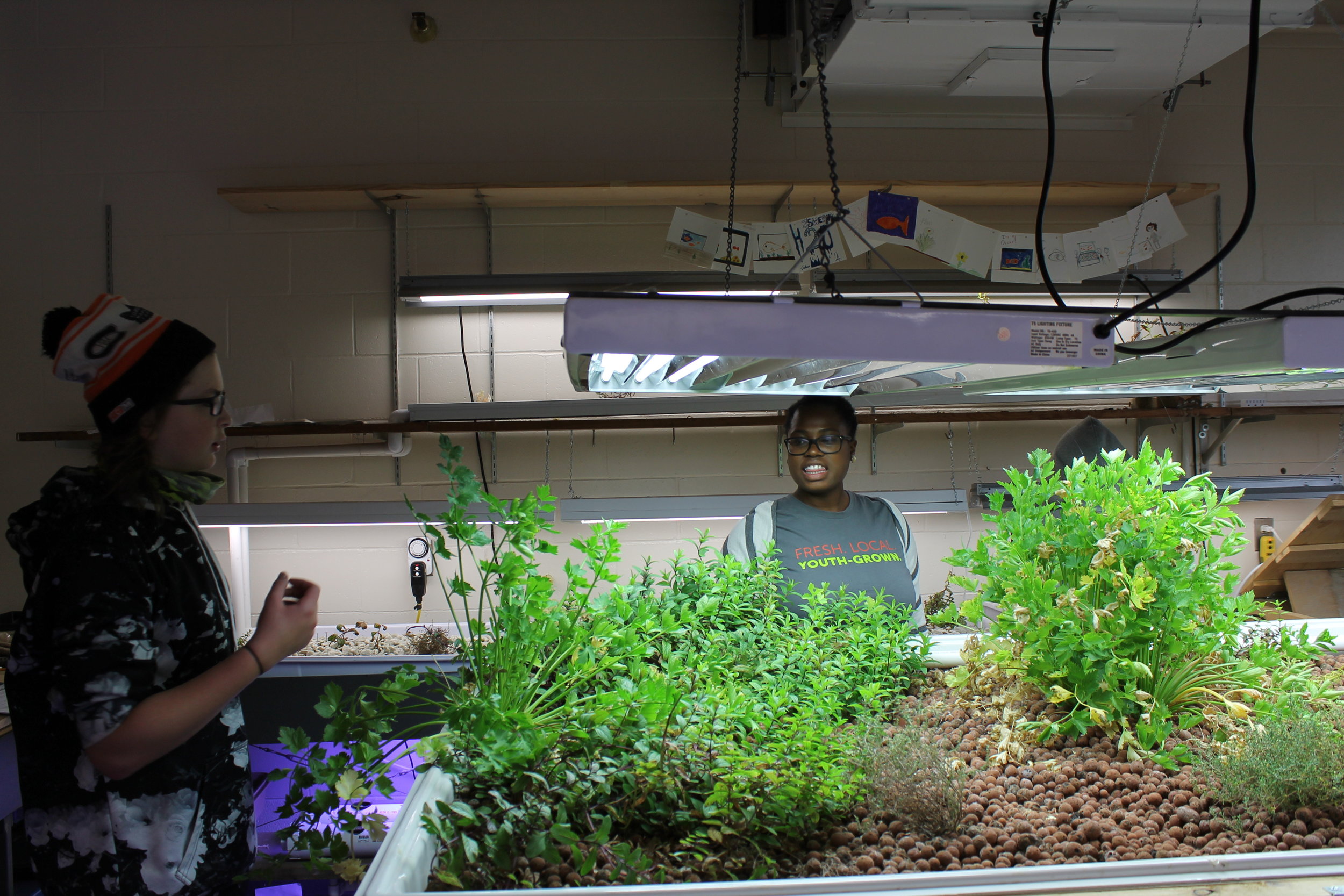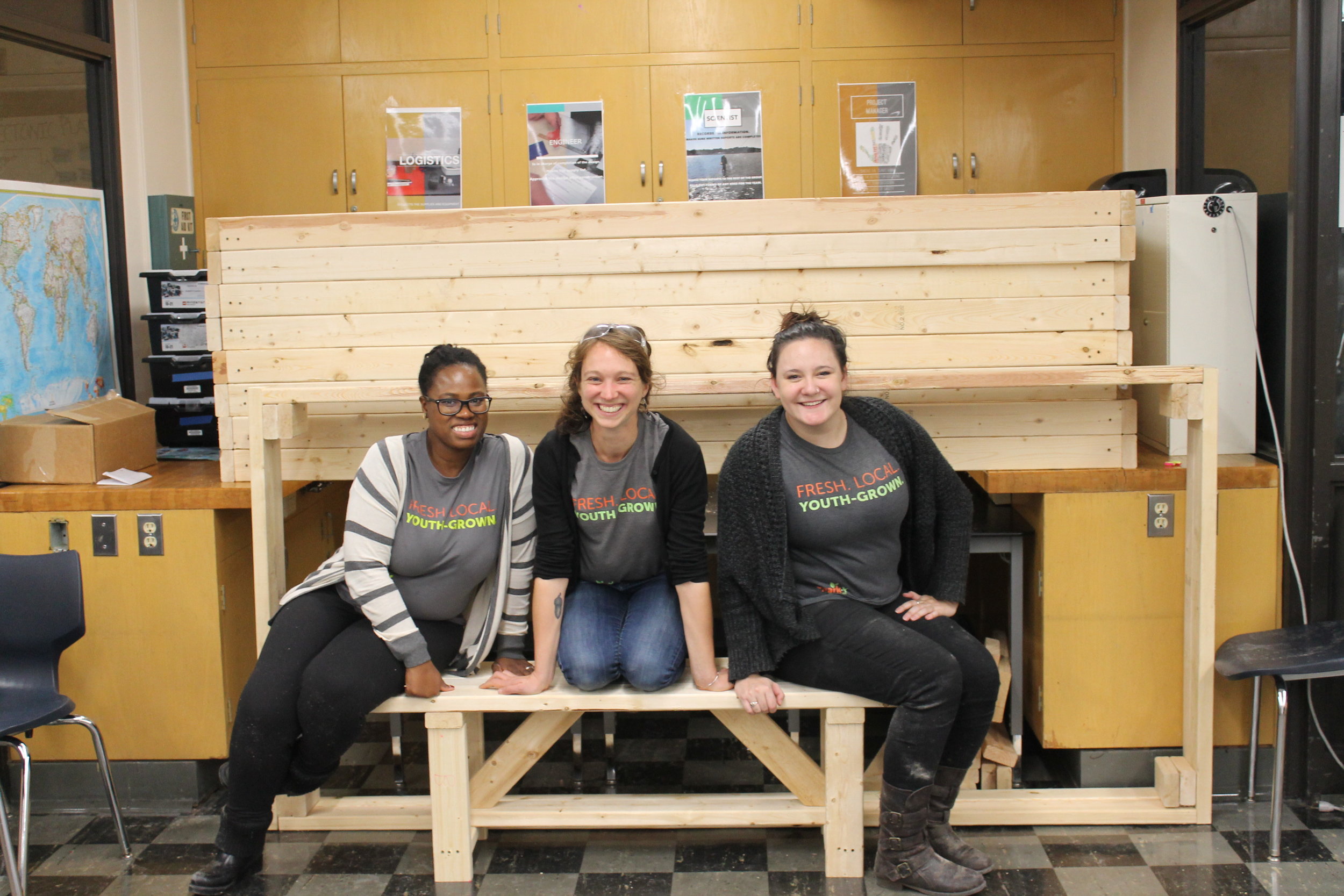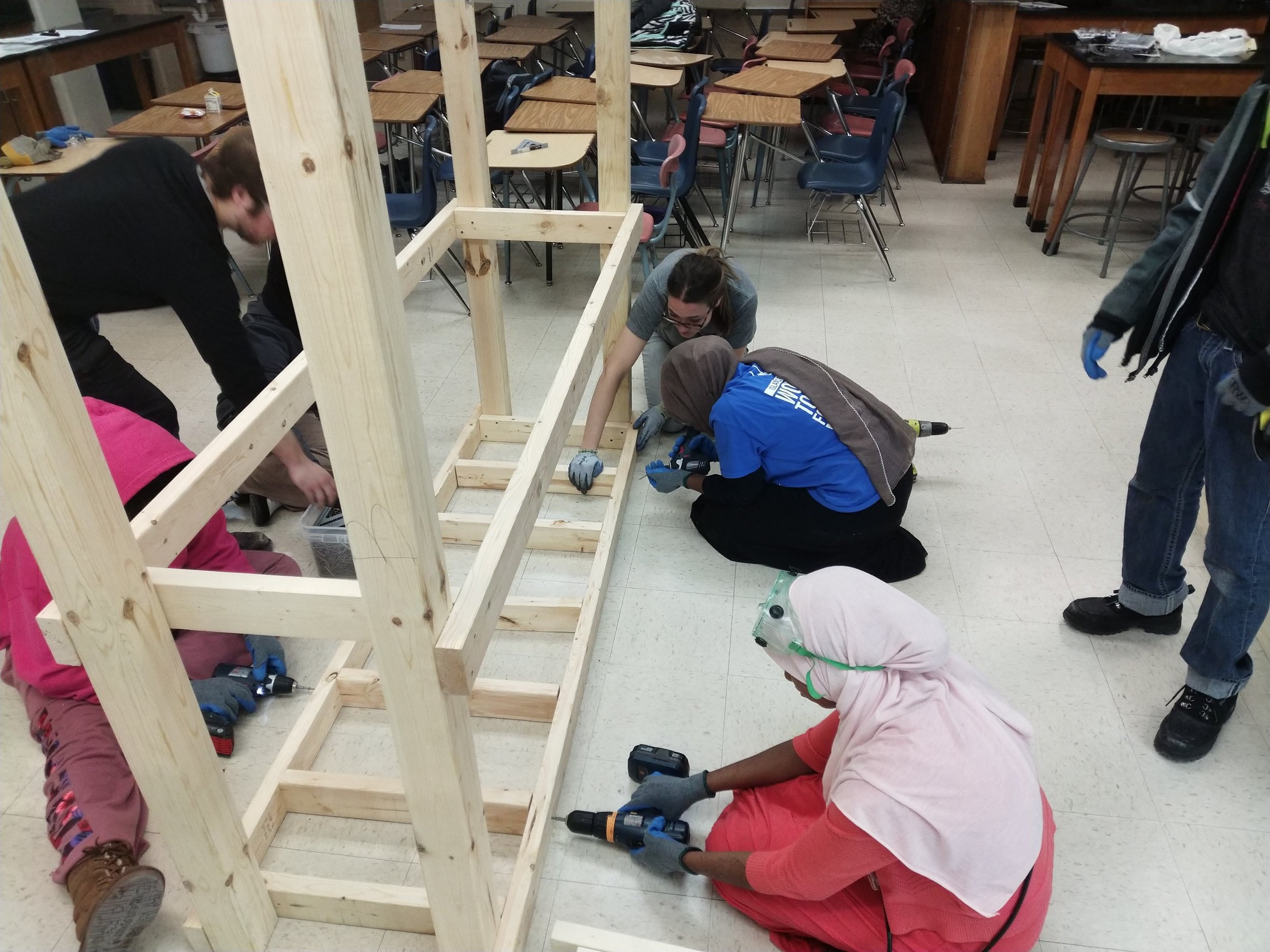The following blog post was written by Nicholas Lockert, Spark-Y Sustainability Educator, on our after school program with Columbia Heights.
The after school program at Columbia Heights High School is one that is entirely different than any other program I personally have been a part of since working with Spark-Y. This program, named “Aquaponics” by the students who participate in the program, takes place once a week for two hours and has around 12-15 participants every week. Some of these students have been apart of this program since the ‘17-’18 and ‘18-’19 school years and have returned this year with just as much excitement and enthusiasm as the years before. Other students who are new to the program have joined due to word of mouth from those who participated before. What draws these students to join such a program like ours? The aquaponics and hands-on learning always stand out as potential answers to this question and I believe there is a large amount of validity with those answers. However, I think the real answer to this question is the autonomy that we give the students in this program.
When I walk into the classroom where we house our aquaponics after school program, I’m greeted by our kids enjoying their afternoon snack and playing video games together on a variety of devices. A large majority of our students are a tight-knit group who have a love for learning and playing video games with their friends. Once both snacks and games are finished, we get started. We have an introductory lesson or game to warm things up before we go over our plan for the day, what projects we want to complete, and what maintenance needs to be done on our aquaponics system. Following the introduction for the day, the students break themselves up into different groups to take on the tasks they need to complete.
Day to day tasks that the students complete are varied. They include inspecting the aquaponic system to make sure everything is running properly, testing the water within the system to ensure our fish aren’t going to get sick and the plants are getting the optimal amount of nutrients they need, feeding the fish, and checking on our vermicompost system to see if our worms need anymore food. Many times the students will switch up what they work on each week so they can get a feel for what kind of work goes into each task. Allowing them to divvy up the tasks amongst themselves is important in my eyes because they enjoy the freedom to choose what job they do each week instead of being assigned a job. They will be more likely to complete that task in a more timely fashion and the quality of the job will most likely be higher too. Better quality work being put towards the system tasks allows for higher quality produce coming from our system.
After completion of the normal weekly tasks, we will usually reconvene to discuss or work on our next long-term project. In the past, these projects included building the classroom’s aquaponic system and building a new door for the garden shed. This year, we have a few projects in mind.
Our current ongoing project is to grow produce for an afterschool cooking class that takes place at CHHS on Tuesdays. This class is facilitated by Wes Nugteren, who also takes care of the school garden. We have the ability to provide him with fresh produce throughout the entire school year with our aquaponic system and we want to take full advantage of this opportunity. The students selected all of the produce themselves and plan to pitch their product to Wes to work on their entrepreneurial skills.
Wes has tasked our group with building a set of squirrel-proof bird feeders for the garden. The garden is very luscious and provides a wide variety of produce throughout the year. However, we all know about the pests that tend to wreak havoc on gardens each year. Insects love to ruin our hard work in our gardens by destroying our beautiful plants. Wes has come up with a potential solution to this problem for the CHHS garden. Building bird feeders to attract specific bird species that are insectivores (species that eat insects as their main source of food) can decrease the pest population in our garden. Fewer pests means happier plants.
Staying with the garden theme, one of the raised herb beds in the garden is rotting and falling apart. Our students get the opportunity to design and construct a new raised bed to replace the damaged one.
After having a meeting with Spark-Y’s lead sustainability educator, Sarah Pilato, and talking to her about the CHHS program, she came up with an ingenious idea. Our students love their video games and building computers as stated earlier. Why not task them with creating their own video game based upon aquaponics? Whether its teaching players how aquaponics works, encouraging players to get the highest score by growing the most produce, or strategising on how to defeat enemy bugs to keep the aquaponic kingdom safe, the students will get to develop some form of game that can be used by many other kids to learn about aquaponics in a fun, interactive way.
One thing you might notice about all of these projects is that there is a large area where the students can be creative and run with them however they want. Student autonomy is one of the main goals we have with this program. We give them ideas for projects they can take on, then they do the rest. To help keep the students engaged and ultimately feel more empowered, we let them call (most of) the shots. I asked the students if it was important to them to be autonomous in this program and these are some of the responses I received:
Ifrah: “Yes! It allows us to demonstrate leadership skills at a younger age, which can help us down the road. We can also explore a new passion on our own terms.”
George: “Yes, because its more engaging and interactive than a normal classroom experience.”
Simon: “I think it is important. It is good to be on our own and work as a team. It teaches us and prepares us for the future to finish our work whether we are in college or working a job.”
Hector: “Yes. Leaders arise within the program.” “We are more engaged and bring out our own ideas. We also have the chance to learn from our mistakes.”
Before we know it, it is 5:30pm and we are done for the day. We clean up the classroom, say our goodbyes, and head home already thinking about what we get to work on next week.
